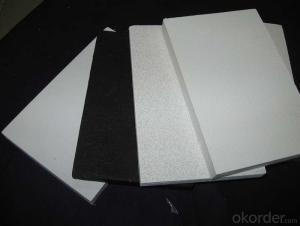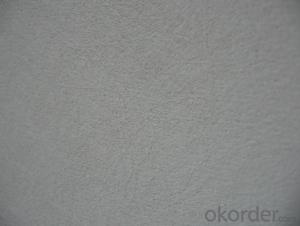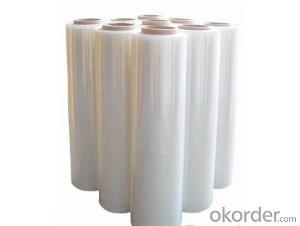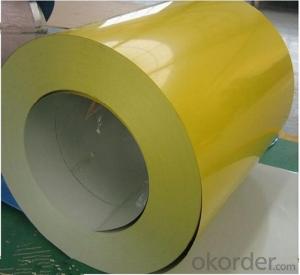White Aluminum Coil Stock
White Aluminum Coil Stock Related Searches
Led Light Bulbs For Ceiling Fixtures Led Lamps For Ceiling 42 In Ceiling Fan With Light Aluminum Coil Stock For Gutters Hole Saw For Aluminum Plate Aluminum Tread Plate For Trailer Bow Plate For Aluminum Boat Max Temp For Aluminum Foil Aluminum Foil For Key Fob Aluminum Foil For Hair FrizzHot Searches
Fiberglass Scaffolding For Sale Fiberglass Panels For Sale Fiberglass Greenhouses For Sale White Gazebo For Sale White Melamine Board Price Ceiling Fan Lowest Price White Plastic Folding Chairs Wholesale Company Office Design Stock Price For Aluminum Aluminum Coil Stock For Sale Aluminum Gutter Coil For Sale Used Aluminum Scaffolding For Sale 1/4 Aluminum Plate For Sale Aluminum Bar Stock For Sale Aluminum Round Stock For Sale Aluminum Diamond Plate For Sale Aluminum Scaffolding For Sale Craigslist 6061 Aluminum Plate For Sale Aluminum Dock Plate For Sale 7075 Aluminum Plate For SaleWhite Aluminum Coil Stock Supplier & Manufacturer from China
Okorder.com is a professional White Aluminum Coil Stock supplier & manufacturer, offers integrated one-stop services including real-time quoting and online cargo tracking. We are funded by CNBM Group, a Fortune 500 enterprise and the largest White Aluminum Coil Stock firm in China.Hot Products
FAQ
- The fire resistance of products is enhanced by aluminum coils in multiple ways. To begin with, aluminum possesses a high melting point, enabling it to endure high temperatures without deforming or melting. This attribute is critical in thwarting the fire's propagation as it preserves the product's structural integrity, thereby restricting the fire's ability to infiltrate or weaken it. Moreover, aluminum exhibits exceptional thermal conductivity, allowing it to efficiently disperse heat. This characteristic plays a pivotal role in fire resistance since it aids in cooling the surrounding area, thereby minimizing the likelihood of ignition or combustion of nearby materials. By swiftly transferring heat away from the source, aluminum coils can impede the fire from spreading or escalating. Furthermore, aluminum is non-combustible, signifying that it does not burn or support combustion. This property assumes great importance in fire resistance as it prevents the aluminum coils from serving as fuel for the fire. Instead, aluminum acts as a barrier, impeding the flames from reaching other flammable materials and diminishing the overall fire hazard. Additionally, aluminum displays resistance to corrosion, allowing the coils to maintain their structural integrity over time, even in environments with high humidity or corrosive elements. This durability is crucial as it ensures that the fire resistance properties of products remain intact, providing enduring protection against fire hazards. In summary, the fire resistance of products is bolstered by aluminum coils due to their high melting point, excellent thermal conductivity, non-combustible nature, and resistance to corrosion. These properties collaborate to restrict the fire's spread, efficiently dissipate heat, prevent the addition of fuel to the fire, and preserve the product's structural integrity, ultimately enhancing its fire resistance capabilities.
- Aluminum coils can indeed undergo customization in terms of thickness. The specific requirements of a particular application can determine the adjustment of aluminum coils' thickness. This customization is attained through the process of aluminum coil slitting, which involves cutting the original coil into narrower coils of the desired thickness. This method enables the flexibility to meet a range of needs and specifications across diverse industries.
- Aluminum coils are commonly used in insulation applications as they are lightweight, durable, and have excellent thermal conductivity properties. They are typically used to create a radiant barrier or reflective insulation, where they are installed between the outer walls or roofs of a building and the insulation material. The reflective surface of the aluminum coil helps to reflect radiant heat away from the building, reducing heat transfer and improving energy efficiency. Additionally, aluminum coils are also used in HVAC systems to create air ducts that ensure proper insulation and prevent heat loss or gain.
- The storage life and shelf life of aluminum coils can vary depending on various factors such as the type of alloy, coating, and storage conditions. However, in general, properly stored and maintained aluminum coils can have a storage life of several years and a shelf life of up to 12 months or more. It is important to store them in a dry, clean, and well-ventilated area to minimize the risk of corrosion or other damage. Regular inspection and maintenance are also crucial to ensure their longevity.
- Yes, aluminum coils can be used in the production of architectural panels. Aluminum is a versatile material that is widely used in the construction industry due to its lightweight, durability, and corrosion resistance. Aluminum coils, which are typically made by rolling aluminum ingots into thin, flat sheets, provide a convenient and efficient way to produce architectural panels. Architectural panels, such as aluminum composite panels (ACP) or solid aluminum panels, are commonly used as cladding systems for buildings. These panels serve both functional and aesthetic purposes, providing weather protection, insulation, and enhancing the overall appearance of the structure. Aluminum coils are used in the production of architectural panels because they can be easily formed and shaped into various panel designs, such as flat sheets, corrugated panels, or custom profiles. The coils can be cut to size and then processed through various techniques, including bending, folding, punching, or welding, to create the desired panel shape and dimensions. Furthermore, aluminum coils offer a wide range of finishing options, such as anodizing, powder coating, or painting, which allows for customization and enhances the aesthetic appeal of architectural panels. These finishes not only provide color options but also improve the durability and weather resistance of the panels. In summary, aluminum coils are suitable for the production of architectural panels due to their versatility, durability, and aesthetic options. Their use in the construction industry has become increasingly popular, as they offer a cost-effective and efficient solution for creating high-quality panels that meet the functional and design requirements of modern architecture.
- also, can aluminum become oxidized when secured down with metal nuts and bolts vice stainless steel nuts and bolts?
- Aluminum is very reactive to caustic substances, as well as acids. One of the perils of running nitrous oxide injection on a motor with aluminum heads or pistons is that you generate trace amounts of nitric acid which will corrode these parts over time. As mentioned here by other members, aluminum oxide is a powdery white residue. In the presence of water for a long period of time, or with the reactions mentioned above, aluminum will oxidize. If it's wheels you are talking about, the best solution is to keep them clean, dry, and free of brake dust. A lot of wheels though come with a coating to protect the aluminum.
- I had a physics exams today and it was asking whether or not a shiny surface aluminium blanket was suitable to keep the sleeper warm. I put that because it's a conductor of electricitiy, heat loss will be greater so it wont be suitable for keeping him warm. On the other hand, some other people said that because it had a shiny surface, thus a good reflector of heat, it would be suitable for keeping him warm. Are both arguments correct?
- Electrical conductivity has nothing to do with it. Emergency blankets of the type you describe have much lower thermal conductivity than metallic aluminium. The shiny surfaces both reflect body heat back to the body and do not radiate heat away. The sun is not involved in its operation as they work equally well at night or in other unlit places.
- We have all heard the Us saying aluminum and their euro counterparts saying aluminium. I assumed this was just a small difference in culture or location. But, while reading my chemistry book (Chemistry the Central Science 12th) i came across a section saying: Cations formed from nonmetal atoms have names that end in -ium: NH4+ ammonIUM ion, H3O+ hydronIUM ion. So, i have came up with a hypothesis, could it be possible that when the periodic table was coming together, the aluminium was changed to aluminum to allow the rules to work? Thus making aluminum the correct spelling? Give me your thoughts.
- www.okorder ... aluminum (n.) 1812, coined by English chemist Sir Humphry Davy (1778-1829), from alumina, name given 18c. to aluminum oxide, from Latin alumen alum (see alum). Davy originally called it alumium (1808), then amended this to aluminum, which remains the U.S. word, but British editors in 1812 further amended it to aluminium, the modern preferred British form, to better harmonize with other metallic element names (sodium, potassium, etc.).













































